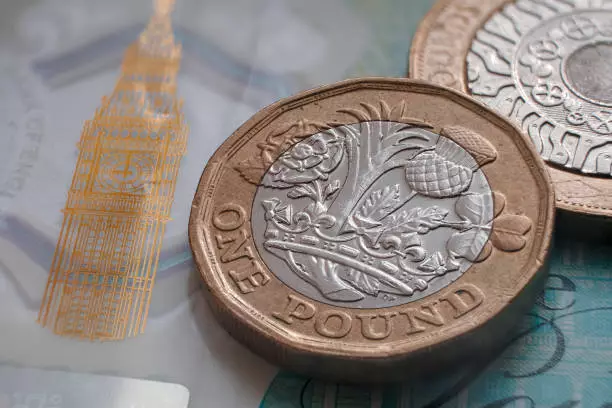The British Pound (GBP) is currently navigating a period of uncertainty, marked by a notable resistance below key levels against the US dollar (USD). Despite previous attempts to push higher, the currency struggled to break above the 1.3800 barrier, signaling a temporary pause in bullish momentum. This stagnation points to an underlying weakness that traders and investors should watch closely, especially as the pair begins to correct its recent gains.
The recent price action highlights a significant bearish undertone, with the pair unable to sustain movements above the pivotal 1.3700 mark. A forming bearish trend line around 1.3650 underscores existing resistance, offering a clear signal that sellers are still in control. The move below 1.3700, coupled with a low near 1.3562, suggests that short-term momentum favors the downside. Such a decline hints at a potential shift in market sentiment, especially if the pair breaches support levels at 1.3615 or even approaches 1.3560.
From a technical perspective, Fibonacci retracement levels at 1.3675 (50%) and 1.3700 (61.8%) serve as critical thresholds. Should the market manage a close above these, particularly momentum-breaking resistance at 1.3670, an upward push toward 1.3700 — and potentially beyond to 1.3790 — becomes plausible. Conversely, slipping below established supports may accelerate the decline, potentially testing the 1.3440 zone, which marks a significant support area.
This oscillation between resistance and support showcases a currency caught in a tug-of-war, with the market awaiting a decisive catalyst. The Pound’s resilience seems fragile, burdened by broader economic uncertainties, geopolitical factors, and investor risk appetite. It is in these moments that market participants must remain vigilant, prepared for rapid shifts that could redefine the GBP/USD trajectory in the days ahead.
The Euro’s Steady Rise and Breaking the Resistance Barrier
While GBP faces resistance and potential downside signals, the Euro (EUR) appears to be gaining strength against the Pound, signaling a more optimistic outlook in the near term. The EUR/GBP pair recently broke above the 0.8600 resistance zone, climbing past short-term hurdles and entering a more bullish phase. The move above the 0.8620 level and reaching as high as 0.8670 suggests that buyers are becoming increasingly confident, potentially setting the stage for further gains.
This rally is also supported by technical signals—the pair broke out of a contracting triangle pattern with resistance at 0.8630, indicating a shift in market dynamics. The ability of the euro to stay above the 50-hour simple moving average is a positive sign, reflecting momentum backing from traders who see value in the currency pair. Fibonacci retracement levels near 0.8590 (50%) provide support, and a sustained move above resistance levels could springboard EUR/GBP toward the 0.8700 mark in the near future.
Market participants should interpret this as a potentially bullish divergence against the subdued performance of GBP/USD. The Euro’s resilience likely stems from a combination of improving economic indicators in the Eurozone, relative stability in European politics, and the US dollar’s own fluctuations. The technical pattern suggests that, if the EUR/GBP manages to firmly close above 0.8635, the path toward higher levels becomes more evident.
However, caution remains paramount. The EUR/GBP does face resistance around the 0.8635 zone, and failure to hold above this level could precipitate some retracement toward support zones at 0.8590 or even the 0.8545 level. This tentative balance signifies that while bullish sentiment is emerging, it is not yet without its hurdles. Significant gains beyond 0.8700 would likely require fundamental catalysts—perhaps positive economic data from Europe or dovish signals from the Federal Reserve.
Market Implications and Strategic Outlook
The current landscape presents a compelling narrative: the GBP appears vulnerable, struggling to maintain gains against the dollar, while the Euro gains ground against the Pound. This divergence underscores a broader theme—investor focus may shift toward Europe’s economic recovery prospects amidst global uncertainties.
For traders, these developments suggest preparing for increased volatility, especially if key levels like 1.3700 for GBP/USD or 0.8635 for EUR/GBP are breached convincingly. Momentum indicators and price action should be monitored closely; a breakout above resistance or a breakdown below support levels could trigger sharp movements, creating lucrative entry points.
Fundamentally, the market is likely to respond to macroeconomic releases, geopolitical developments, and central bank signals. The European Central Bank’s stance on tightening or easing policies, coupled with US economic data, will heavily influence these currency pairs. Investors who recognize the subtle shifts in technical patterns—such as triangle breakouts or Fibonacci retracements—will be better equipped to capitalize on emerging trends.
This period underscores the importance of not only technical analysis but also a keen eye on underlying economic narratives. The Euro’s recent strength might be sustained if European economic indicators continue to improve. Conversely, the Pound’s inability to decisively break resistance suggests underlying vulnerabilities that could persist unless supported by positive news or shifts in risk sentiment.
The currency market is at a juncture where technical cues hint at significant opportunity, but caution remains advised. The coming days will reveal whether the Euro can capitalize on its current momentum, or if the Pound will find renewed strength to challenge resistance levels once again.

